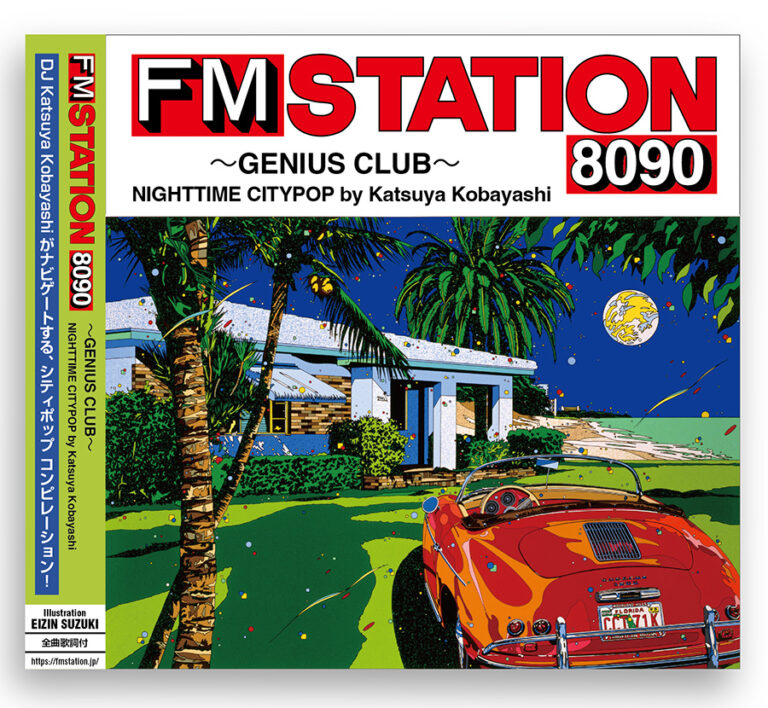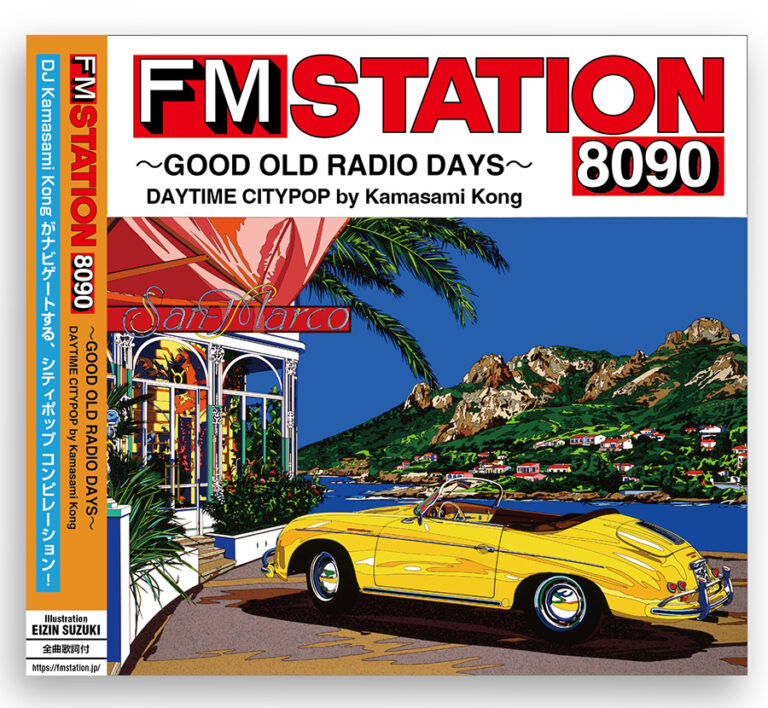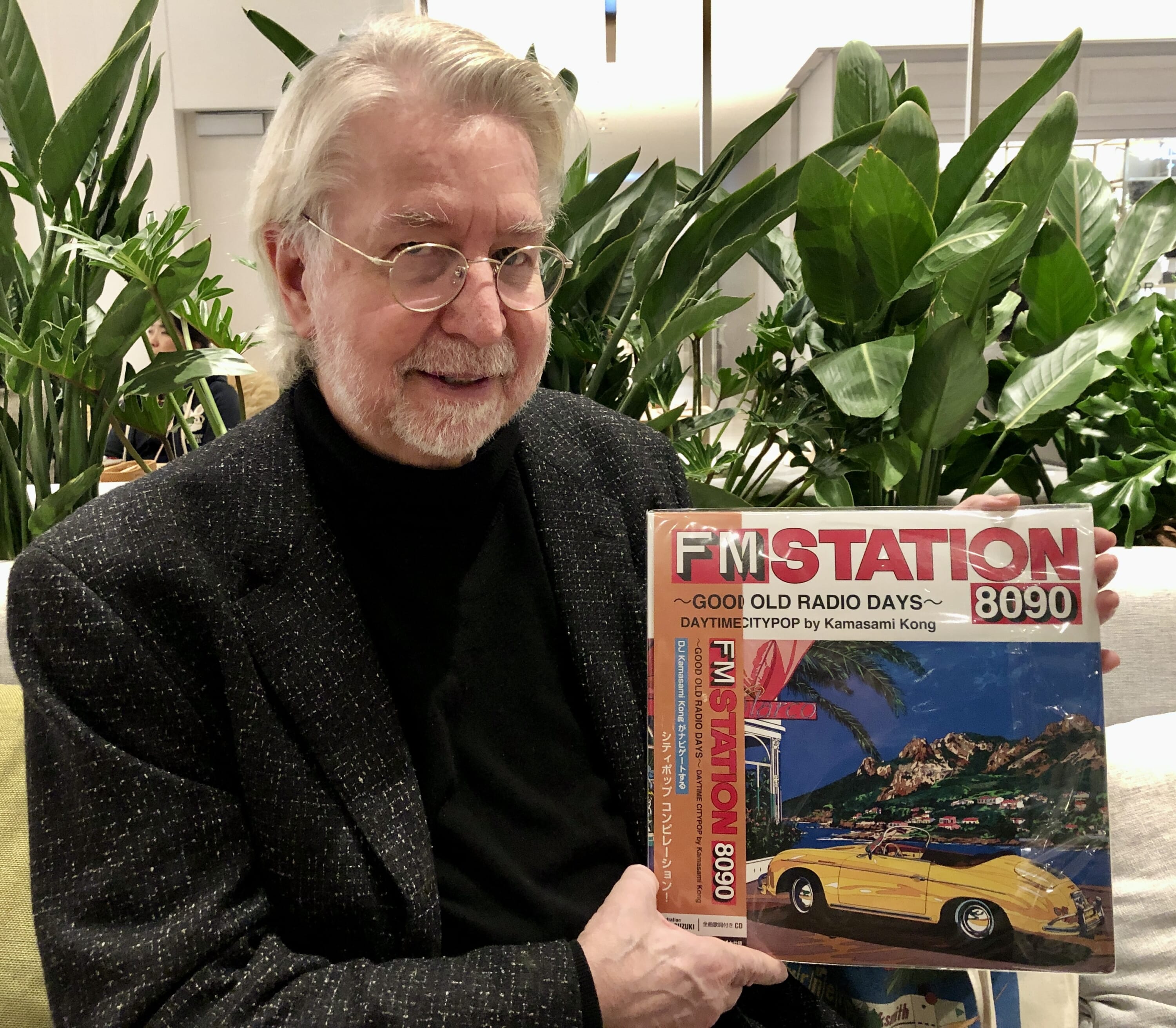There’s something irresistibly beguiling about city pop. Even if you weren’t in Japan in the late 1970s or early 80s when it took over the airwaves, it seems all too familiar, even nostalgic. The smooth grooves, slick production, and summer vibes echo other genres from the era but evoke a distinctly Japanese flavor of good times, or at least ironic hedonism. That’s the mood served up in a series of recent compilation albums by veteran DJs Kamasami Kong and Katsuya Kobayashi.

What is City Pop?
Less a genre than a vibe, city pop escapes easy definition. Thematically, it’s like a downtown nightclub dreaming about exotic islands and beaches. Musically, it’s a heady cocktail of American soul, funk, soft rock, disco, boogie and AOR, taking cues from bands like Steely Dan and The Doobie Brothers, that served as a soundtrack to the excesses of the 80s. Its homegrown roots include the tropical-themed musings of Haruomi Hosono, the J-pop pioneer associated with bands like Happy End and Yellow Magic Orchestra. But it has no greater champion than Tatsuro Yamashita, the prolific singer-songwriter, producer and arranger behind such city pop classics as “Sparkle,” “Christmas Eve” and “Plastic Love,” which his wife Mariya Takeuchi wrote and sang. Though notoriously camera-shy, Yamashita was a dominant force, turning out lush harmonies and slinky guitar sliding over a driving, funk-inflected backbeat that became a signature city pop sound.

City Pop Radio Compilations Bring Back Old School Jams
The crooner from Ikebukuro is one of many songwriters featured on two FM Station 8090 compilations released earlier this year by Avex. The concept is a fictitious radio station playing smooth grooves. On one record, Good Old Radio Days: Daytime City Pop, songs are introduced by Kong, while Kobayashi does the honors on its counterpart, Genius Club: Nighttime City Pop.
Both are follow-ups to Kong’s FM Station 8090 City Pop & J-pop album that Avex put out in 2022, but the KK-initialed duo have been appearing on albums together since Yamashita’s 1984 Come Along 2 compilation. It was only fitting that the graphic artist who provided its cover art, Eizin Suzuki, did the visuals for the FM Station compilations. The neon-tinted seaside scenes are the setting for tunes by Anri, Junichi Inagaki, Akira Terao, Epo and many more, both of the era and later.
“The theme of the album hosted by Kong was based on the flow of time from morning, noon and evening at a pleasant FM station by the sea,” says producer DJ Blue, who conceived the project. The theme of the album, navigated by Kobayashi, is a stylish and atmospheric station at night in the city. The music selection reflects the respective themes to fit the setting of each program.
For anyone not familiar with the format, albums featuring DJs introducing songs were a thing about 40 years ago. Kong, born Robert Zix in Ohio in 1949, appeared on many. In the 70s and 80s, when he was one of the most popular radio jocks in Hawaii, Japanese tourists would record his shows and bring them back to Japan, where they were sold as bootlegs. It was a time when the radio-focused Japanese magazine FM Station, the inspiration for the compilations, included cardboard inserts for cassette tapes, so radio fans could make their own mixes. In a nod to this tradition, the FM Station albums were also released on cassette.
“This is all about the music that I love and the music I’ve been playing on my radio shows since the early 80s,” says Kong. “Back then it wasn’t called city pop. It was just the hits of the day. The music has a great groove, and you feel so comfortable listening to it.”

Kamasami Kong by Tim Hornyak
Kamasami Kong’s Influence on City Pop
Kong himself helped shape city pop. Sales of his bootleg programs led to work in East Asia, and he divided his time between Hawaii, Japan and Taiwan. Japanese listeners were hungry for Hawaiian music. Kong was the perfect spokesperson, appearing on compilation albums featuring surfers and beaches on the cover. The same themes appeared on Yamashita’s Big Wave, the soundtrack to a 1984 Japanese documentary of the same name about surfers hanging ten off Oahu and Maui.
The album was partly a throwback to the Beach Boys (and included two of their tunes). It cemented seaside fun as an essential part of city pop. Indeed, Hawaii and contemporary Hawaiian music was one of the inspirations for city pop as a whole, says Kong. His own influence included suggesting the name for the band Omega Tribe, whose music appears on all the FM Station 8090 records. The albums also feature the instrumental number “Blue Lagoon” by Masayoshi Takanaka, known for his outlandish guitars shaped like surfboards.
City Pop’s Decline and Resurgence
City pop was a reflection of Japan’s dizzying prosperity in the 80s, symbolized by the Sony Walkman and glitzy nightclubs in Tokyo. After the bubble burst and economic stagnation set in, it was all too easy for Japanese youth to dismiss city pop as the irrelevant fantasies of an older generation. But everything uncool eventually becomes cool again. City pop has seen a resurgence over the past decade, fueled by streaming services and record buyers looking for the vinyl gems of yesteryear. Major artists are also quoting those bygone vibes: Canadian singer the Weeknd sampled Tomoko Aran’s 1983 song “Midnight Pretenders” in his 2022 single “Out of Time.” What’s old is new again, and Kong and Kobayashi are all too happy to keep spinning those golden oldies. They may even have more city pop collections coming in 2024.
“I fell in love with songs like ‘Ruby no Yubiwa’ by Akira Terao, a phenomenon that many people copied,” says Kobayashi. “We experienced this 40 years ago and it’s such a nice trend that it has come back again. It’s like the Beatles — I remember George Harrison wondering if their music would be around in 200 years. Well, it’s been 60 years and people are still listening to them.”









